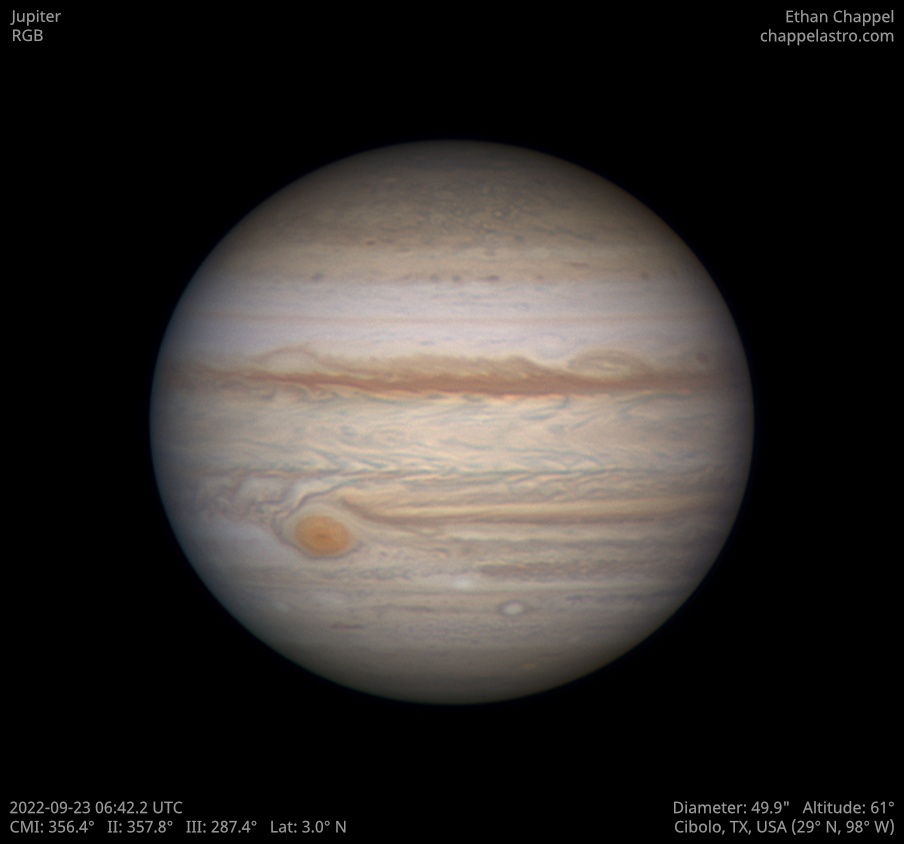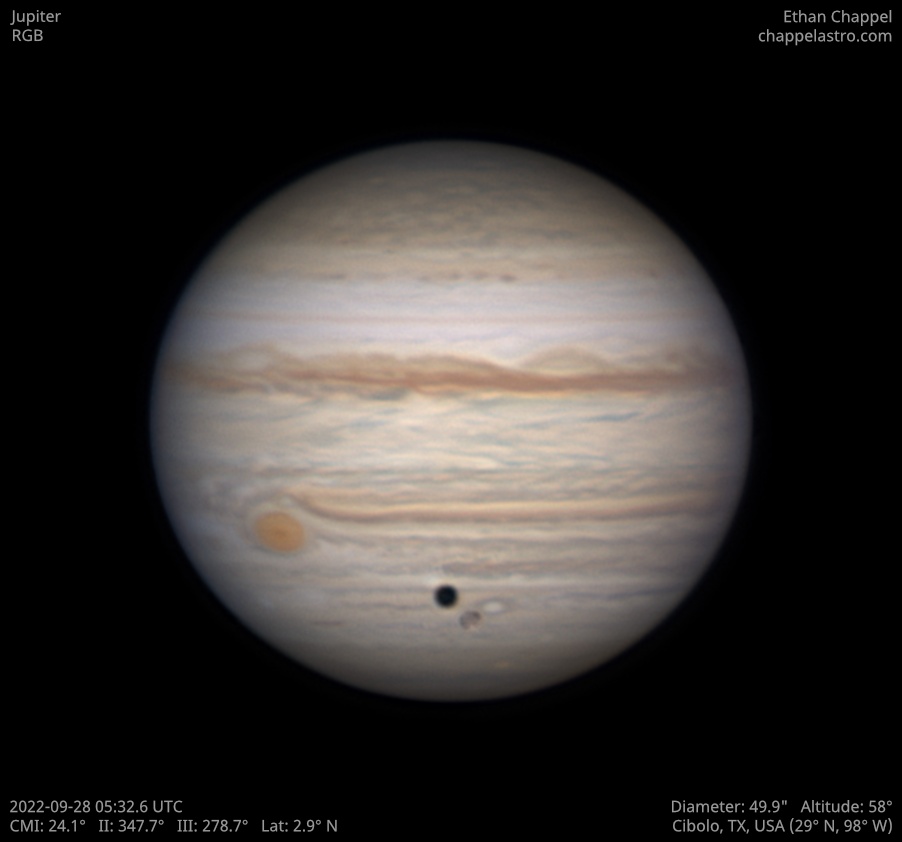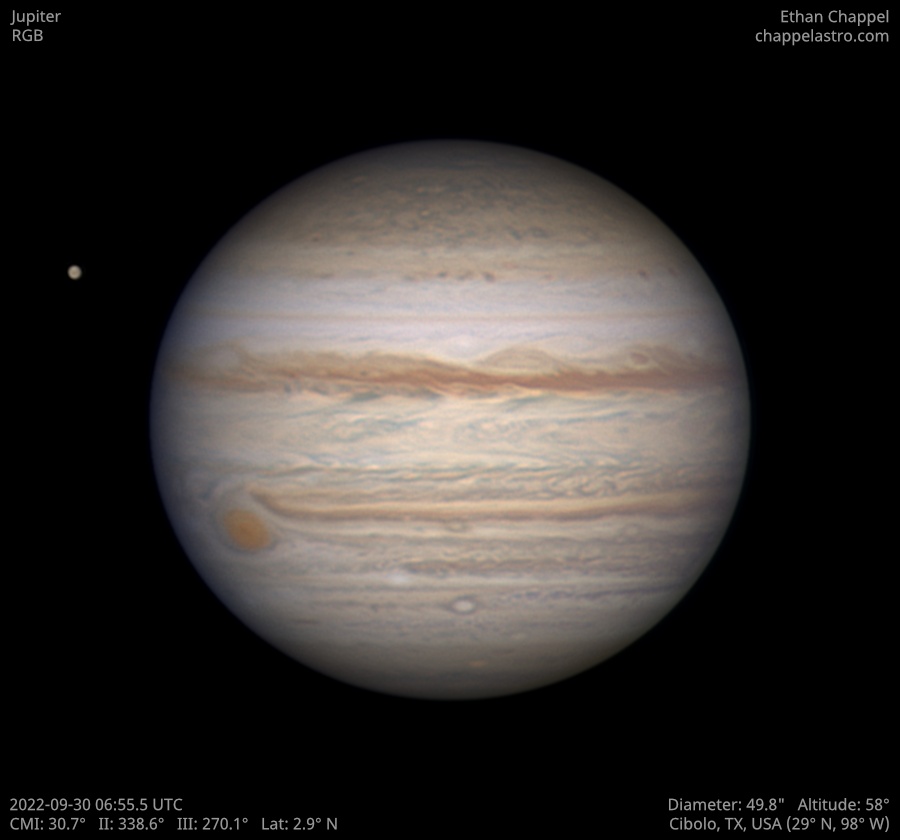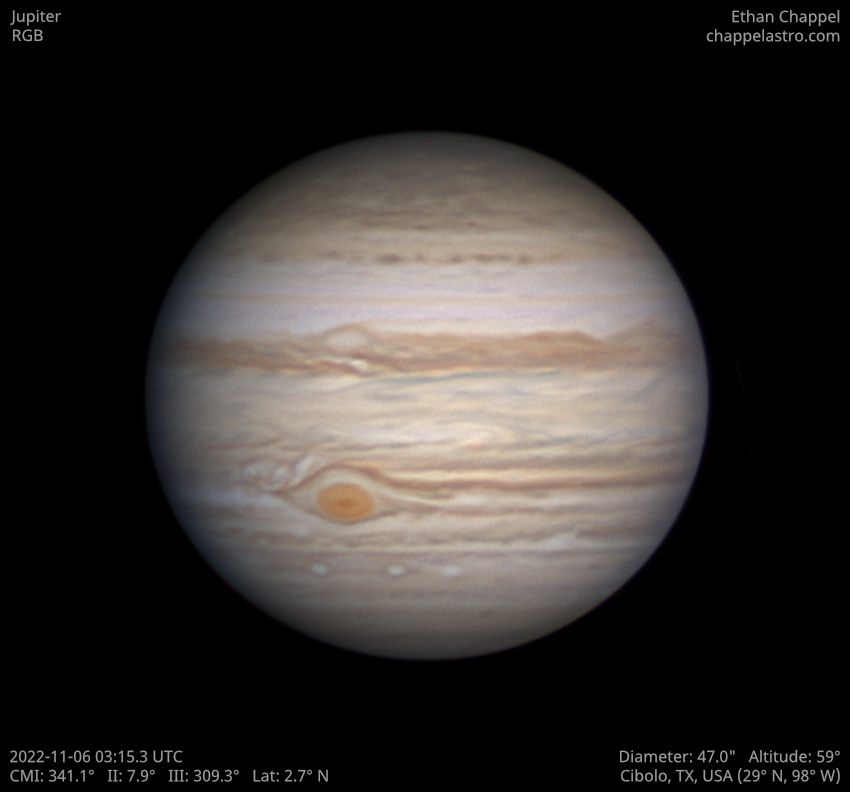Jupiter 2022

UTC
First night of planetary imaging after a months long streak of bad weather.
The Equatorial Zone and North Temperate Belt have lost much of their orange color from last year.
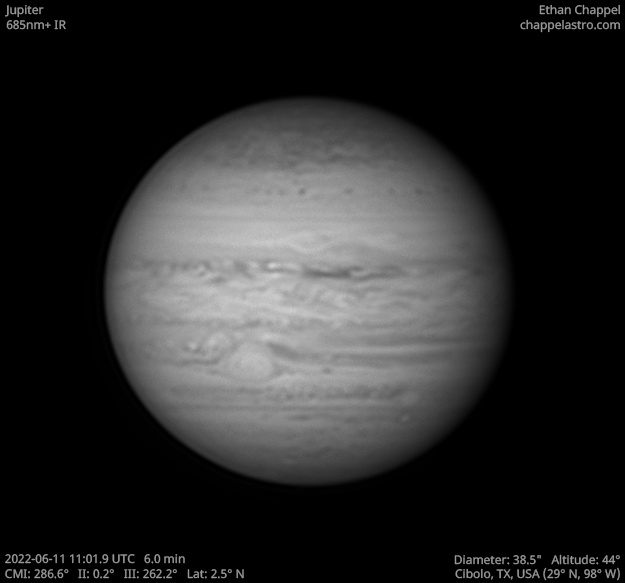
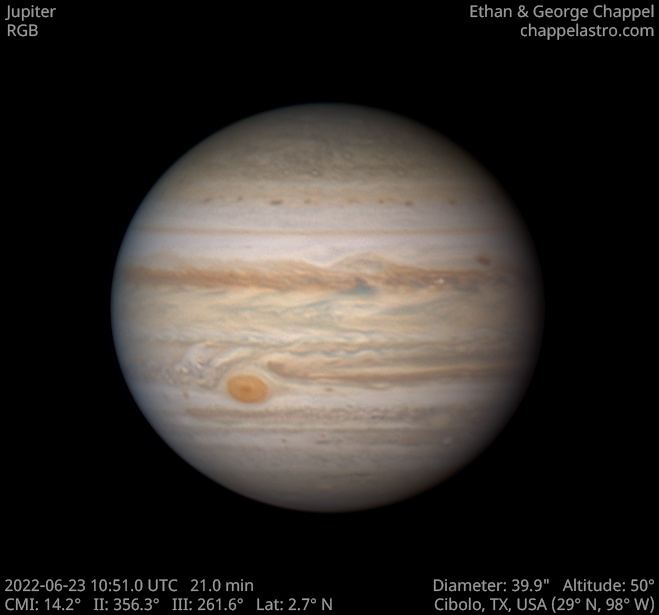
UTC
First time taking the EdgeHD 14 outside since September 2021. The Astro-Physics mounts we've been using for deep sky imaging must have spoiled me because managing such a large and heavy setup on the CGEM DX seemed harder than I remember.
The Equatorial Zone is losing the orange color it has had to varying degrees since 2018. Infrared images show that more heat escapes when the zone is darker, indicating the typical white ammonia cloud layer that is higher and colder is gone. The loss of color indicates the ammonia cloud layer is returning.
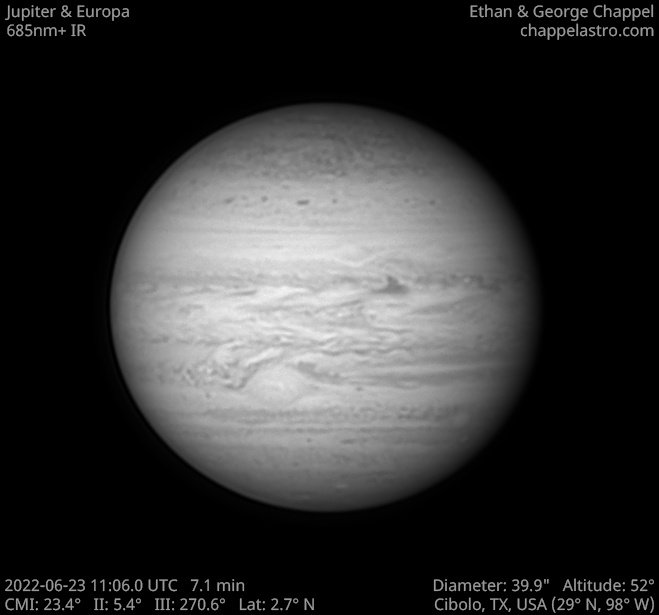
UTC
First time taking the EdgeHD 14 outside since September 2021. The Astro-Physics mounts we've been using for deep sky imaging must have spoiled me because managing such a large and heavy setup on the CGEM DX seemed harder than I remember.
The Equatorial Zone is losing the orange color it has had to varying degrees since 2018. Infrared images show that more heat escapes when the zone is darker, indicating the typical white ammonia cloud layer that is higher and colder is gone. The loss of color indicates the ammonia cloud layer is returning.
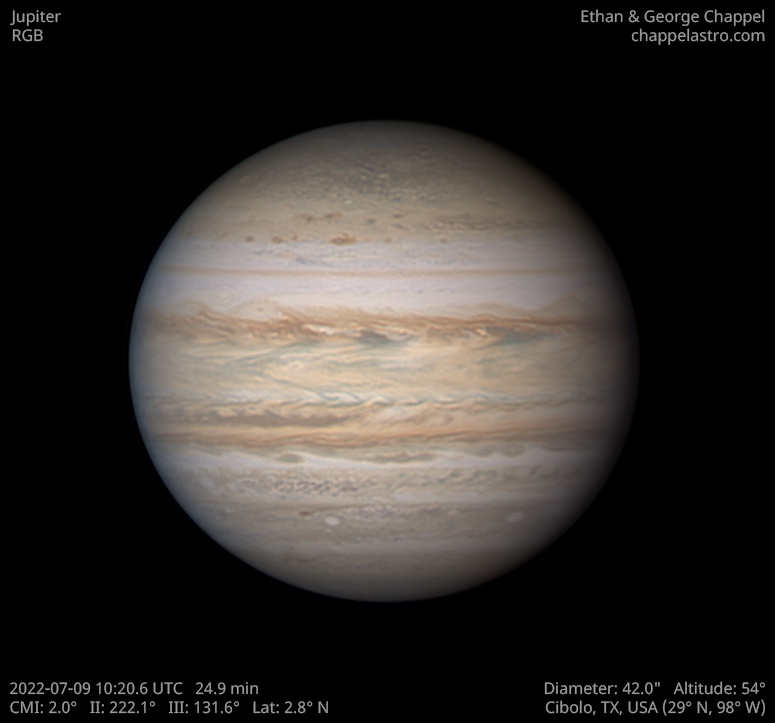
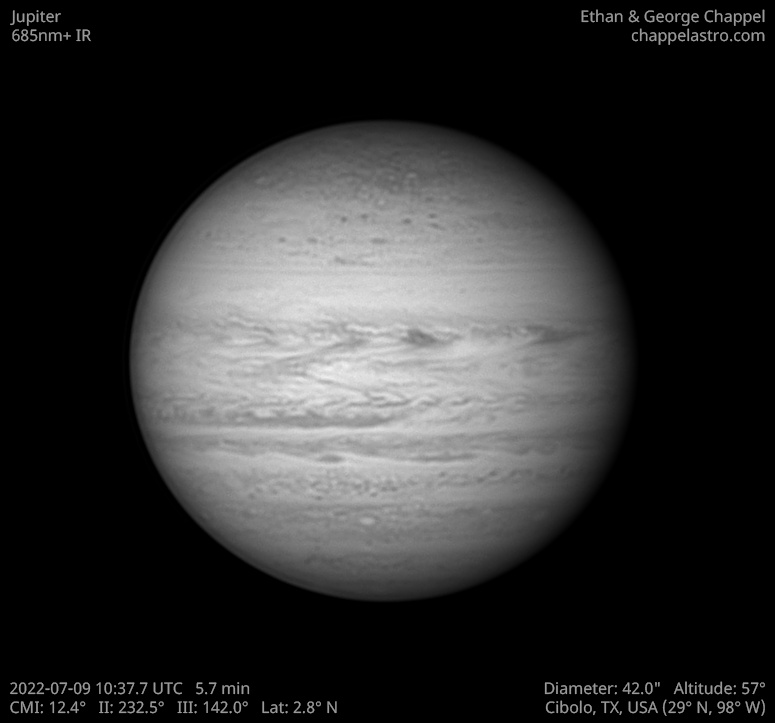
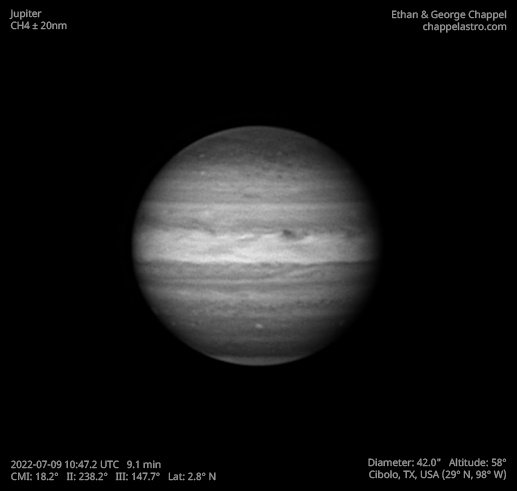
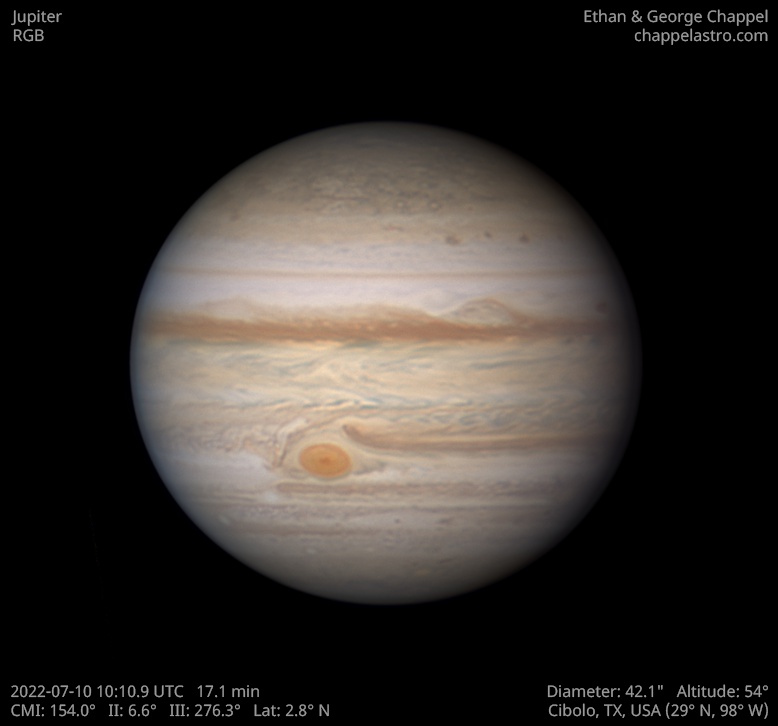
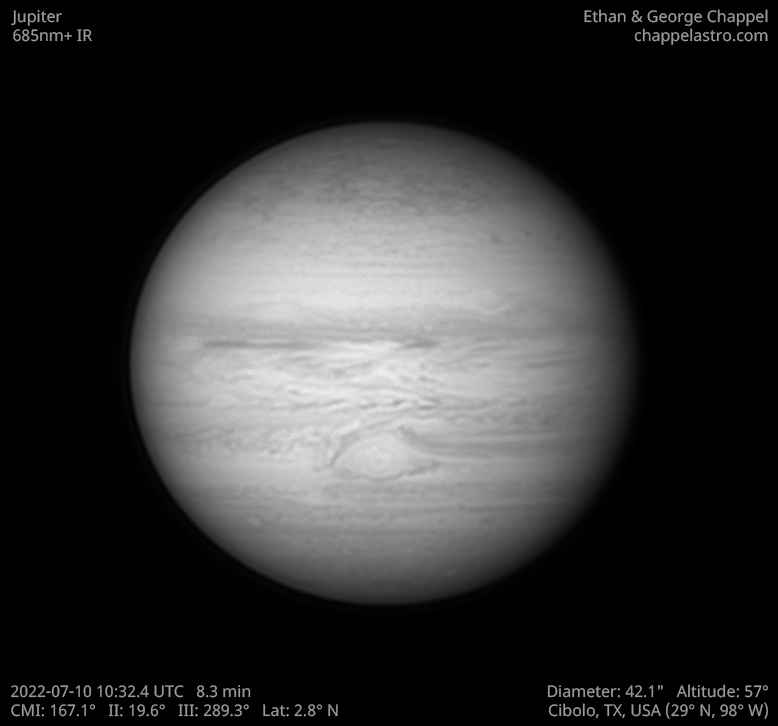
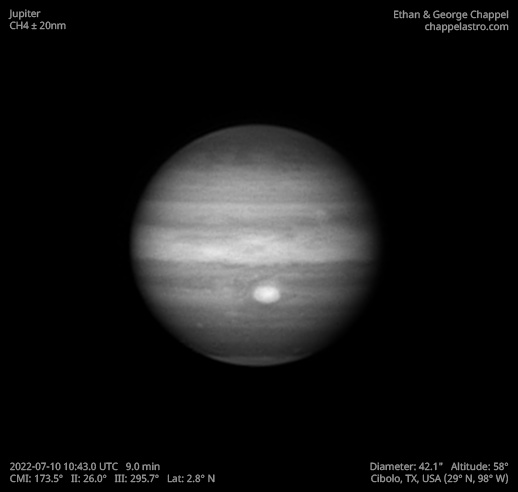
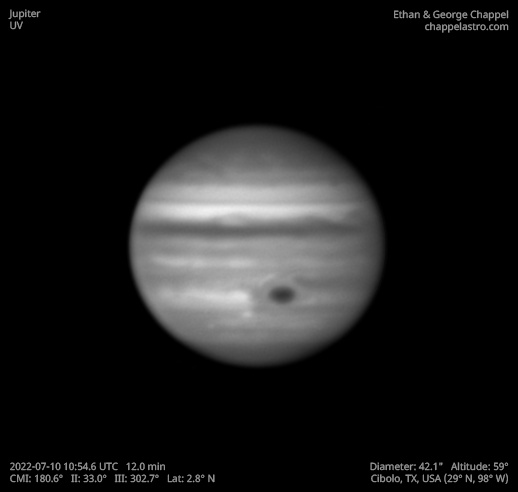
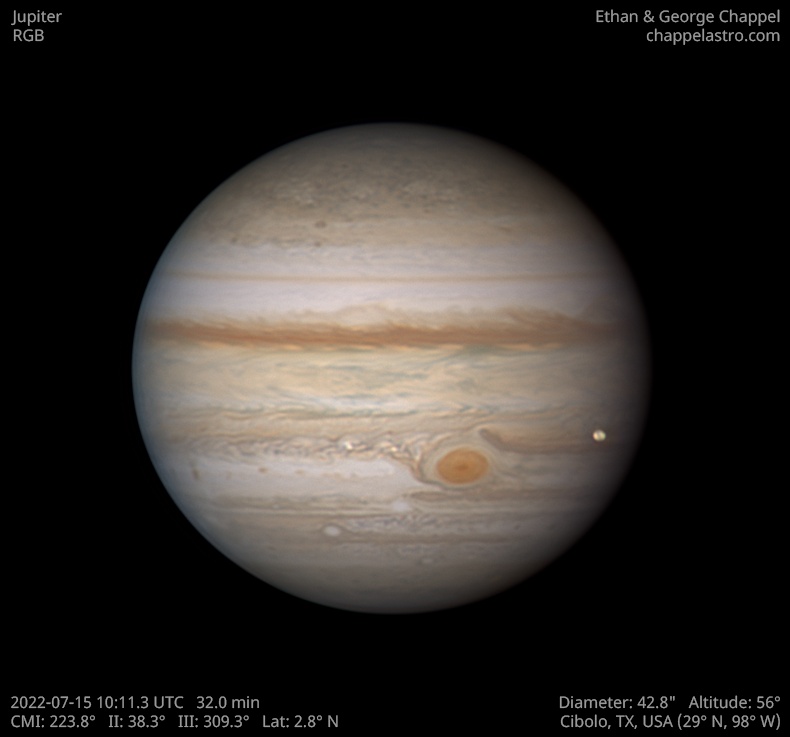
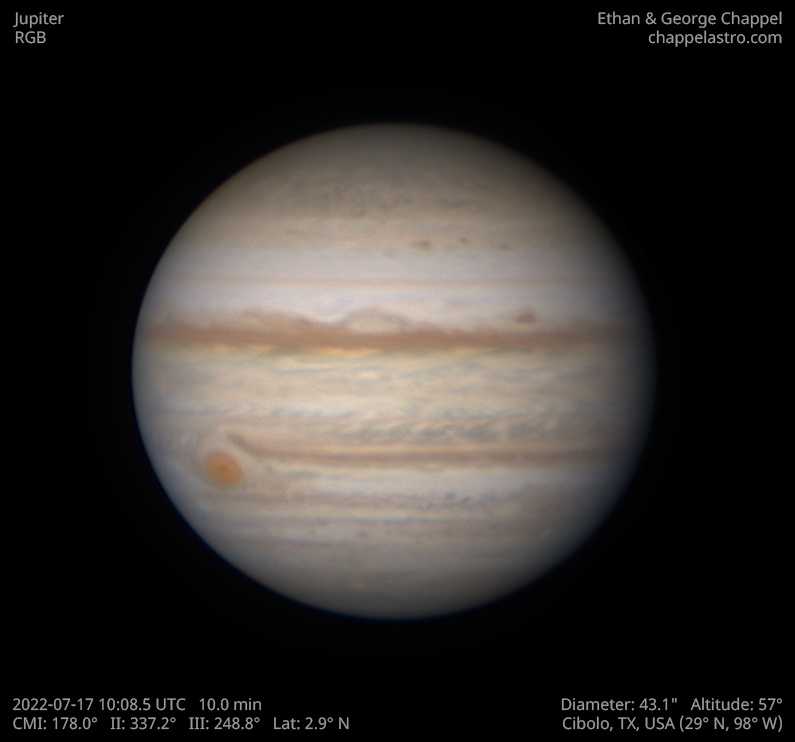
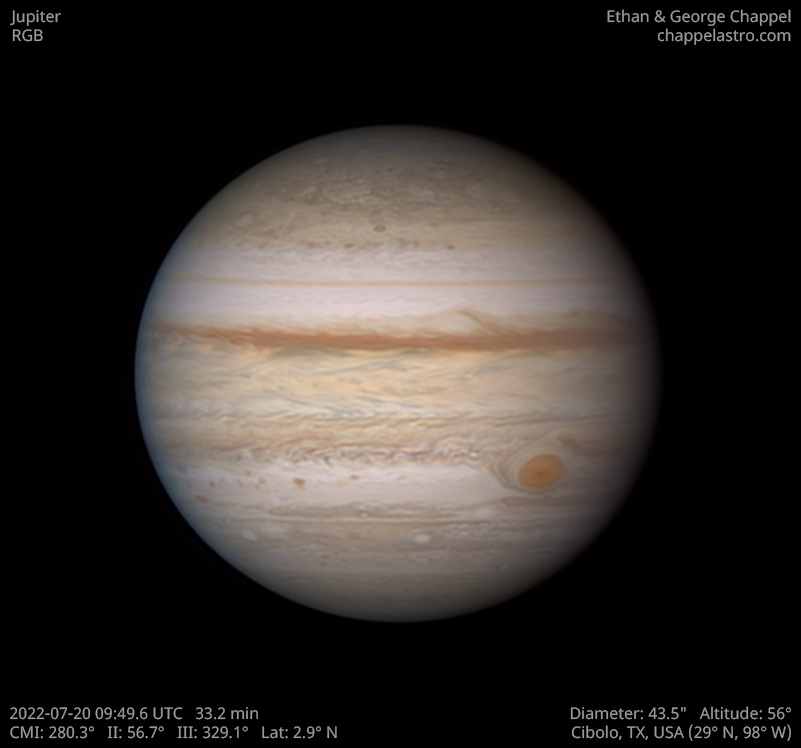

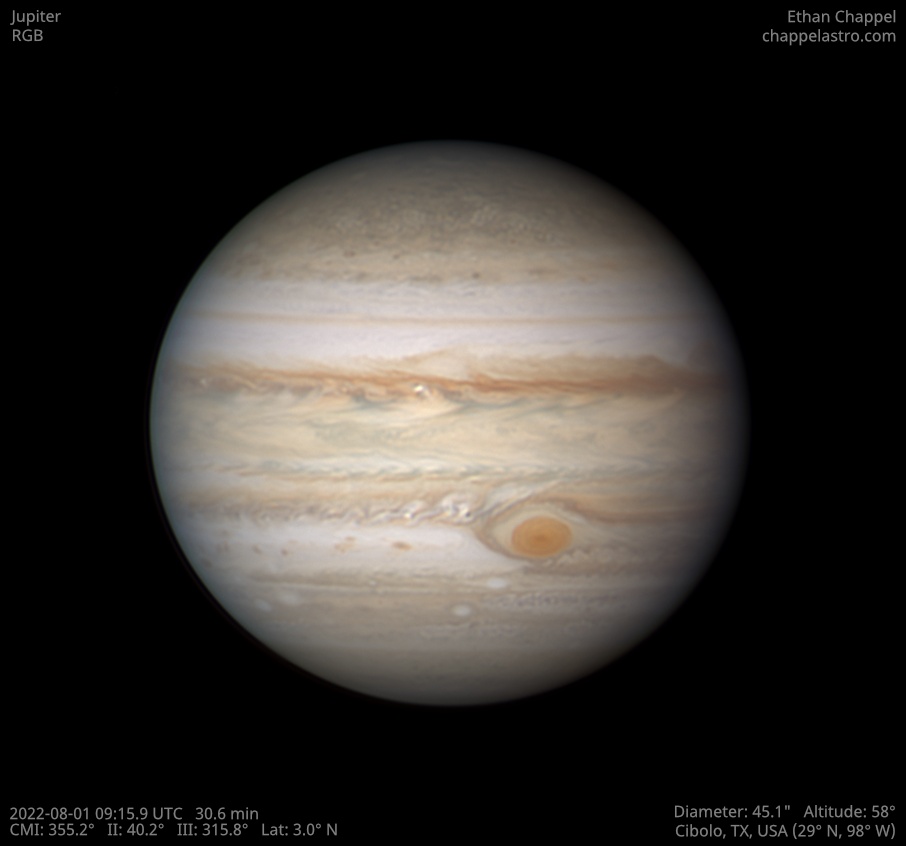
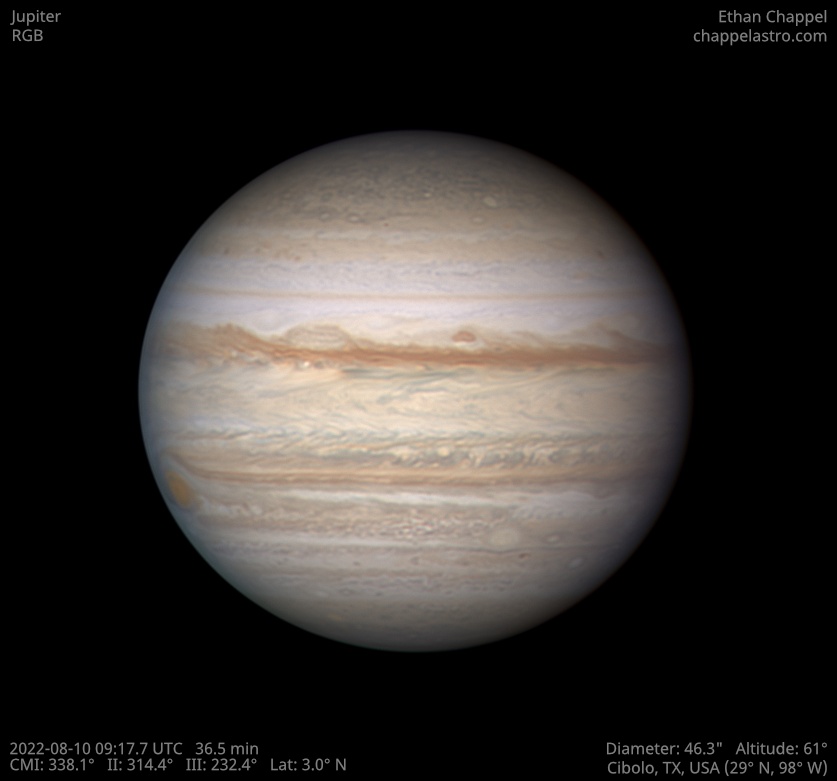
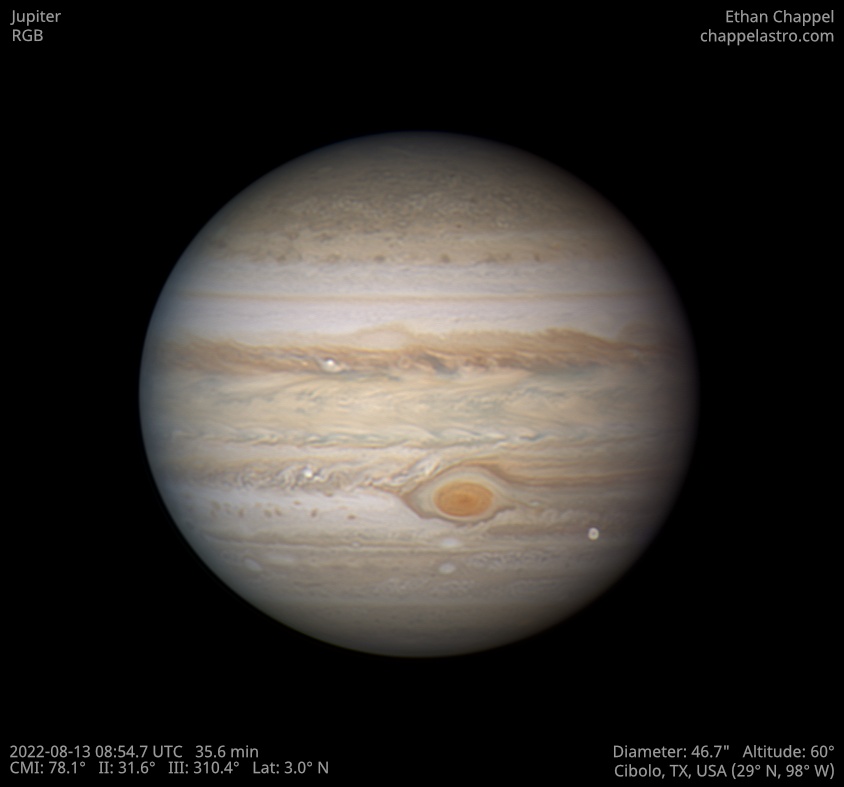
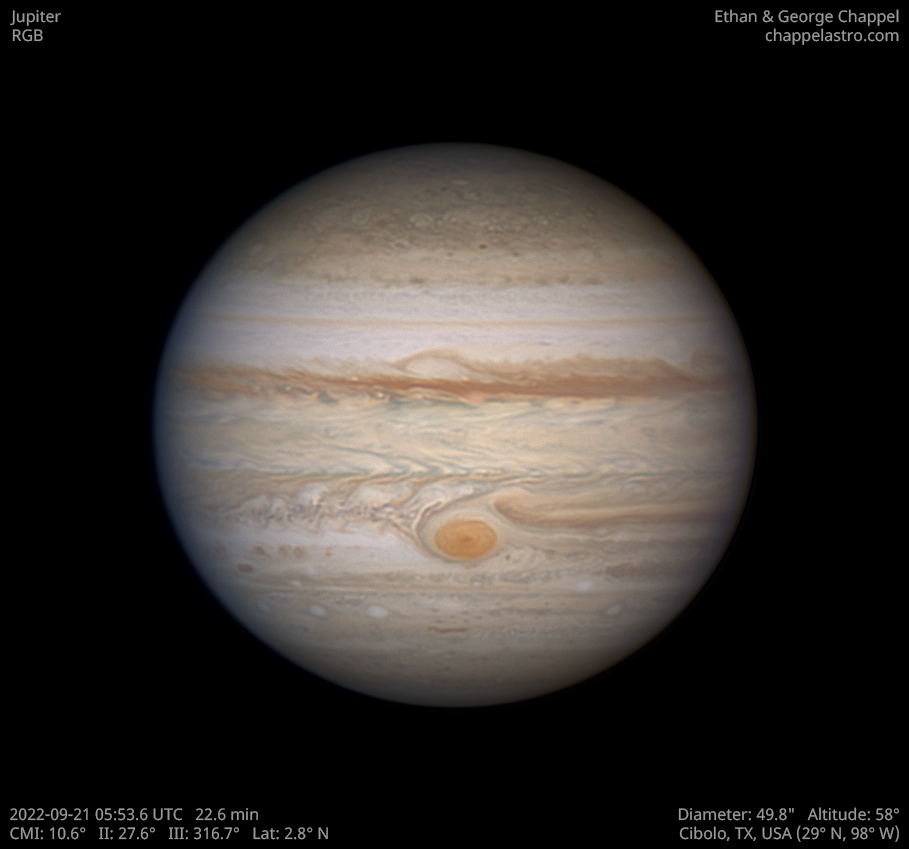
UTC
Possibly the steadiest night I have seen in my 9 years of planetary imaging, and what better time than with Jupiter just a week away from its closest opposition with Earth in six decades! Plenty of fine detail to be seen on every part of the giant planet, especially in the Great Red Spot. The giant storm was 16,800 km in one of my earliest images of the storm in January 2014. However, I measured 14,900 km across in this image, a 12% decrease in nearly a decade. While still slightly wider than Earth, this is only one-third the size it was when regular observations of the storm began in the 1870s.
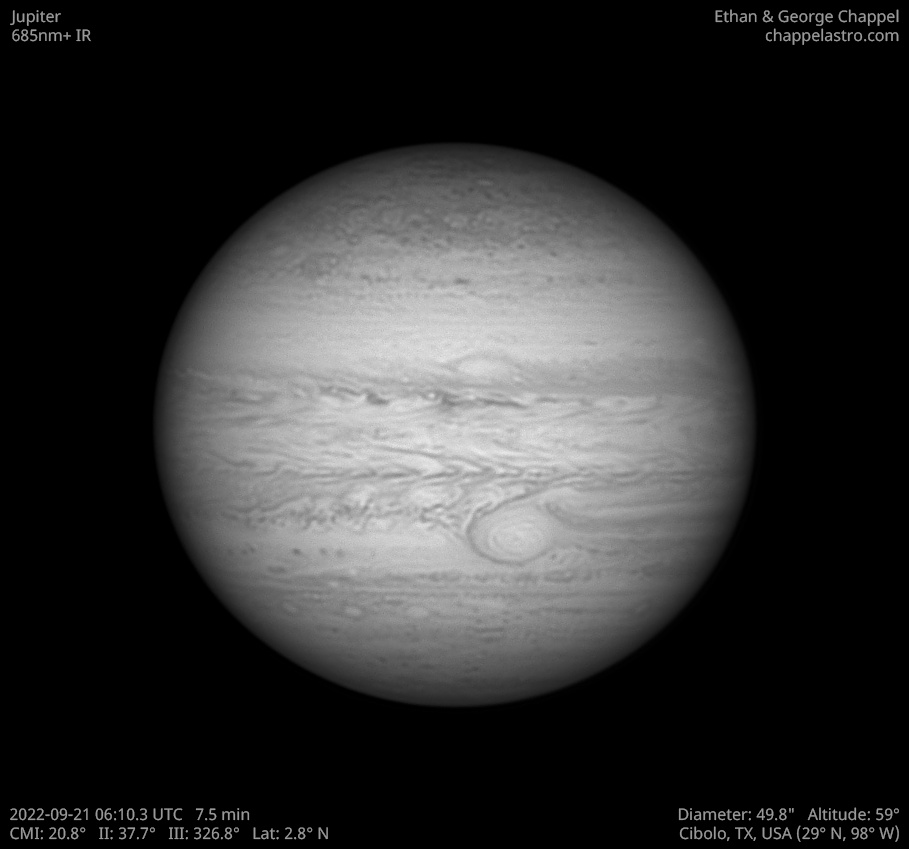
UTC
Possibly the steadiest night I have seen in my 9 years of planetary imaging, and what better time than with Jupiter just a week away from its closest opposition with Earth in six decades! Plenty of fine detail to be seen on every part of the giant planet, especially in the Great Red Spot. The giant storm was 16,800 km in one of my earliest images of the storm in January 2014. However, I measured 14,900 km across in this image, a 12% decrease in nearly a decade. While still slightly wider than Earth, this is only one-third the size it was when regular observations of the storm began in the 1870s.
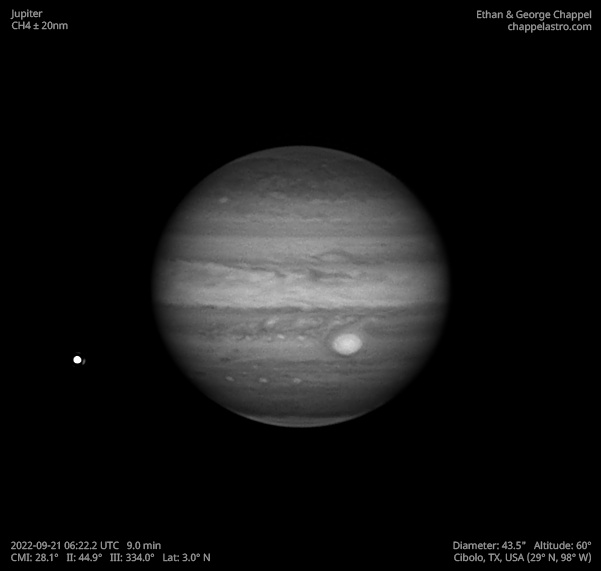
UTC
Possibly the steadiest night I have seen in my 9 years of planetary imaging, and what better time than with Jupiter just a week away from its closest opposition with Earth in six decades! Plenty of fine detail to be seen on every part of the giant planet, especially in the Great Red Spot. The giant storm was 16,800 km in one of my earliest images of the storm in January 2014. However, I measured 14,900 km across in this image, a 12% decrease in nearly a decade. While still slightly wider than Earth, this is only one-third the size it was when regular observations of the storm began in the 1870s.
